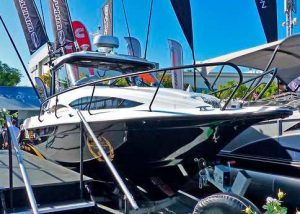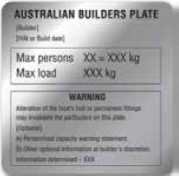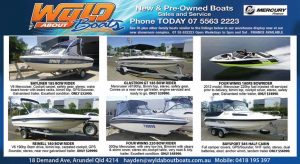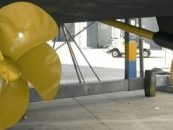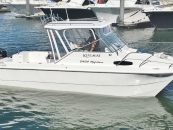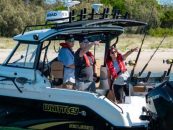Whatever the stage of your boat buying experience is at – whether it is just a dream, or an interest, or a clear decision to buy – it is worthwhile and very important to know the basic things about boats. Some boat owners find that their purchase did not match the experience they were expecting from the boat. You can avoid this by doing sufficient research, and understanding some basic concepts on how a boat works, so you can decide if a certain type will suit the activity for which you are primarily using it. Of course, it goes without saying that it is best to consult a boat manufacturer or a professional boat retailer if you are serious about buying, whether you are a first-time boat buyer or a veteran.
BOAT USE
Generally, your primary use of the boat should be the basis for choosing a particular type of boat. There are four aspects of the boat that will determine the type of activity it is best suited for.
- Hull Design
Hulls are grouped primarily as displacement, planing, and semi-displacement (semi-planing) hulls. Boats with displacement hulls move through the water by pushing the water aside and are designed to cut through the water with very little propulsion. (Examples: large cruisers and most sailboats) Boats with planing hulls can skim along at high speed, riding almost on top of the water rather than pushing it aside. Flat-bottomed and vee-bottomed hull shapes act as planing hulls. (Examples: most small powerdriven vessels, including personal watercraft, and some small sailboats)
The hull shape of a vessel plays an important role in its stability, softness of ride, cornering ability, and fuel efficiency. A chine in boating refers to a sharp change in angle in the cross section of a hull. A hull without chines has a gradually curving cross section. The term hard chine indicates an angle with little rounding, while a soft chine would be more rounded.
In general, hard chine boats run faster for the same horsepower than round bottomed boats. That is because the chine sheds the water off the hull, allowing for less drag. Flat bottom boats pound hard in rough conditions compared to deep-V boats, but they are more stable at rest and have a smaller draught. Round bottom boats offer the softest ride.
- Construction
There are four general types of materials used in manufacturing boats: wood, aluminium, fibreglass, and steel.
Wood is the only natural boat building material used today. Wooden boat manufacturers usually use hardwood, such as mahogany, teak and oak. It is a popular material for small boats (up to 6-metre in length, such as dinghies and sailboats).
Aluminium is a very popular material for boat building. It is the lightest material for building large boats (being 15-20% lighter than polyester and 30% lighter than steel).
Fibreglass, or FRP (fibre-reinforced plastic/polymer), is made from polyester resin reinforced with chopped or woven glass fibres. This material is typically used for production boats because of its ability to reuse a female mould as the foundation for the shape of the boat.
Steel is a heat-treated alloy based on iron. The high strength of steel in relation to the plate thickness and the ability to cut and bend it into many different shapes makes it suitable material for building hulls and superstructures. It is strong, but heavy.
- Stability
Stability is the ability of a boat to return to an upright position after being subjected to external forces. Stability calculations focus on aspects such as centres of gravity, and centres of buoyancy, and on how these interact with each other.
Add-on stability systems are designed to reduce the effects of waves and wind gusts. They do not increase a vessel’s stability in calm seas. International standards require that the boat must be stable even without active systems. Active stability systems, such as stabiliser fins and gyroscopic internal stabilisers, require energy to be applied to the system in the form of pumps, hydraulic pistons, or electric actuators. Passive systems include bilge keel, outriggers, and antiroll tanks.
- Flotation
Buoyancy is the force that causes floating. A boat partly floats and partly sinks according to its own weight and how much weight it carries. A boat will float when its total weight is less than the weight of the water it displaces. The Australian Builders Plate (ABP) requires the buoyancy performance of the boat for vessels less than 6 metres in length to be included. This indicates if the boat has an absolute minimum level of flotation (basic flotation) that will prevent the boat from sinking if swamped, but may capsize if people are on board, or if the boat has flotation that is distributed correctly (level flotation) that will prevent the boat from capsizing when swamped and will allow for people to stay on board.
BOAT SIZE AND ENGINE TYPE
The following is a list of factors that will affect your decision on the right size to suit your purposes:
- the number of passengers
- the load capacity of the boat
- the distance offshore you will be using it (Note that boats built for sheltered waters are usually not suited for offshore boating.)
- the boating conditions you are expecting when you use your boat.
There are different types of marine engines. Engines can either be powered by diesel, petrol or electricity. You have an option for inboard motor, sterndrive (inboard/outboard), outboard motor, paddle wheel, water jet (jetboat, PWC), or fan (hovercraft, airboat). Know that the hull design will determine the type of engine that best suits the boat. It is strongly recommended not to overpower your boat. The extra power that creates extra speed may adversely affect the handling of the boat, compromising safety. The weight of a bigger engine on the back of the boat will also lower the back of the boat and increase the risk of swamping and capsizing.
BOAT OPERATION REQUIREMENTS
Remember that all boats fitted with a motor or auxiliary of 3kw or more (over 4hp) must be registered. To operate a recreational boat with a motor of more than 4.5kw (6hp), a valid marine licence is required. Boats that are used entirely for private recreation should be registered as recreational boats. Boats that are used for purposes other than recreation (school, surf lifesaving or community activities) are registered as other or prescribed other Queensland regulated ships, which may be fee exempt. A boat used in connection with any commercial, government or research activity requires certification under the Marine Safety (Domestic Commercial Vessel) National Law Act 2012 (the national law) to operate in Queensland.
AUSTRALIAN BUILDERS PLATE (ABP)
The Australian Builders Plate (ABP) is a requirement on all new and imported boats. Its importance cannot be overstated, as it indicates essential safety information about the use and limitations of a particular boat. It should include nine items of information that every owner and operator should be aware of.
Published in print April-June 2024
























